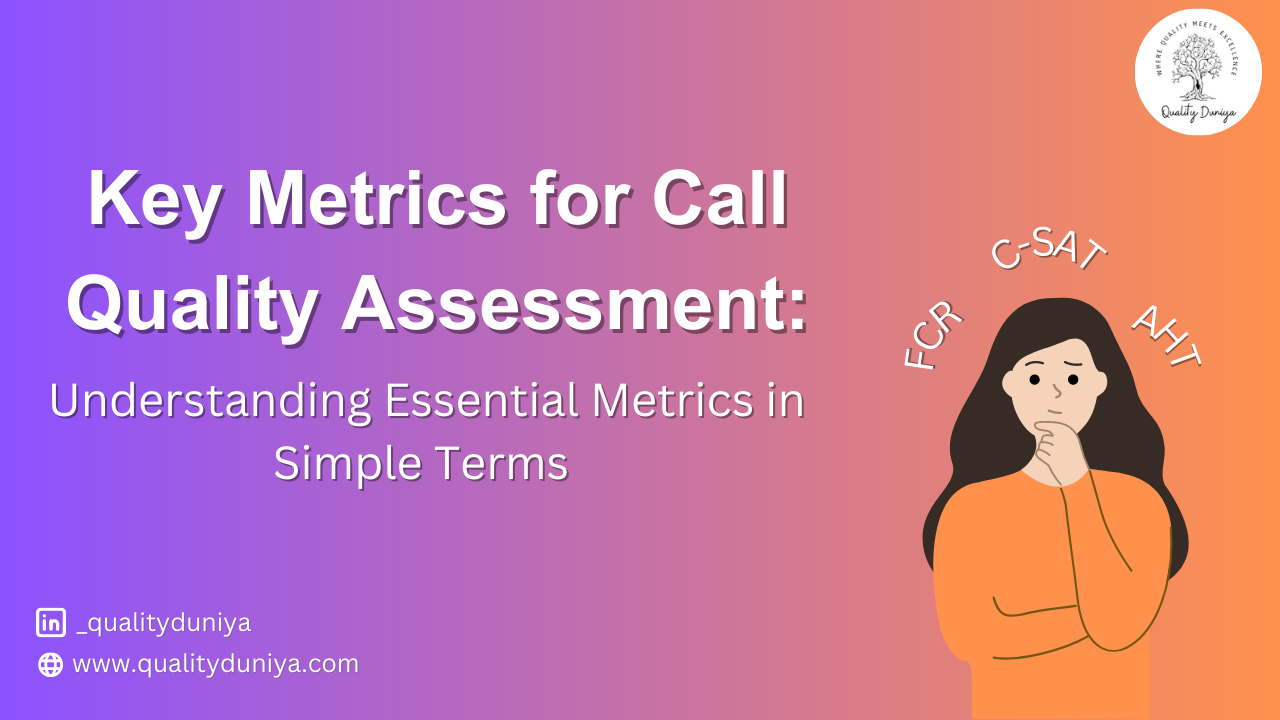Key Metrics for Call Quality Assessment: Call quality assessment plays a vital role in ensuring excellent customer service and overall business success. By measuring and interpreting specific metrics, organizations can gauge the effectiveness of their call center operations.
In this blog post, we will explain the essential metrics used in call quality assessment, including average handling time, first call resolution, customer satisfaction scores, and adherence to scripts. We'll also discuss how these metrics can be effectively measured and interpreted for improved call center performance.
Average Handling Time (AHT):
Average Handling Time refers to the average duration it takes for a call center agent to handle a customer call from start to finish. It includes the time spent talking to the customer, hold time, and any after-call work.
A lower AHT indicates efficient call handling and improved customer experience. To measure AHT accurately, call center software can automatically track call durations and provide insights into agent performance.
First Call Resolution (FCR):
First Call Resolution measures the percentage of customer calls that are resolved during the initial interaction without requiring any follow-up calls. A high FCR indicates effective problem-solving, customer satisfaction, and reduced customer effort.
Monitoring FCR involves tracking and analyzing customer interactions to identify areas where improvements can be made, such as agent training or process enhancements.
Customer Satisfaction Scores (CSAT):
Customer Satisfaction Scores evaluate customers' level of satisfaction with their overall call center experience. It is typically measured through post-call surveys or feedback mechanisms. CSAT surveys gather feedback on factors like agent politeness, knowledge, and problem resolution.
A higher CSAT score indicates happier customers and a better call center performance. To interpret CSAT effectively, analyzing trends and identifying patterns in feedback can provide valuable insights for improving customer service.
Adherence to Scripts:
Adherence to Scripts measures the extent to which call center agents follow predefined scripts or guidelines during customer interactions. Scripts can ensure consistency in service quality and compliance with company policies. Monitoring adherence to scripts involves evaluating call recordings or using real-time monitoring tools to assess how well agents adhere to the provided guidelines. Striking a balance between script adherence and personalization is crucial to delivering an exceptional customer experience.
Effective Measurement and Interpretation:
To measure and interpret these call quality metrics effectively, call centers can leverage advanced analytics tools and call center software. These tools help collect and analyze data, generate comprehensive reports, and identify areas for improvement. By tracking these metrics over time, call centers can assess performance trends, identify bottlenecks, and make data-driven decisions to enhance call quality.
Moreover, it's essential to establish benchmarks or targets for each metric based on industry standards and organizational goals. Regularly reviewing and comparing the metrics against these benchmarks allows call centers to identify performance gaps and implement necessary actions to bridge them.
Conclusion:
Understanding and monitoring key metrics for call quality assessment is crucial for call centers aiming to deliver exceptional customer experiences. Average Handling Time, First Call Resolution, Customer Satisfaction Scores, and Adherence to Scripts are valuable indicators of call center performance.
By effectively measuring and interpreting these metrics, call centers can identify areas of improvement, enhance agent training programs, and refine processes to ensure optimal call quality and customer satisfaction.







